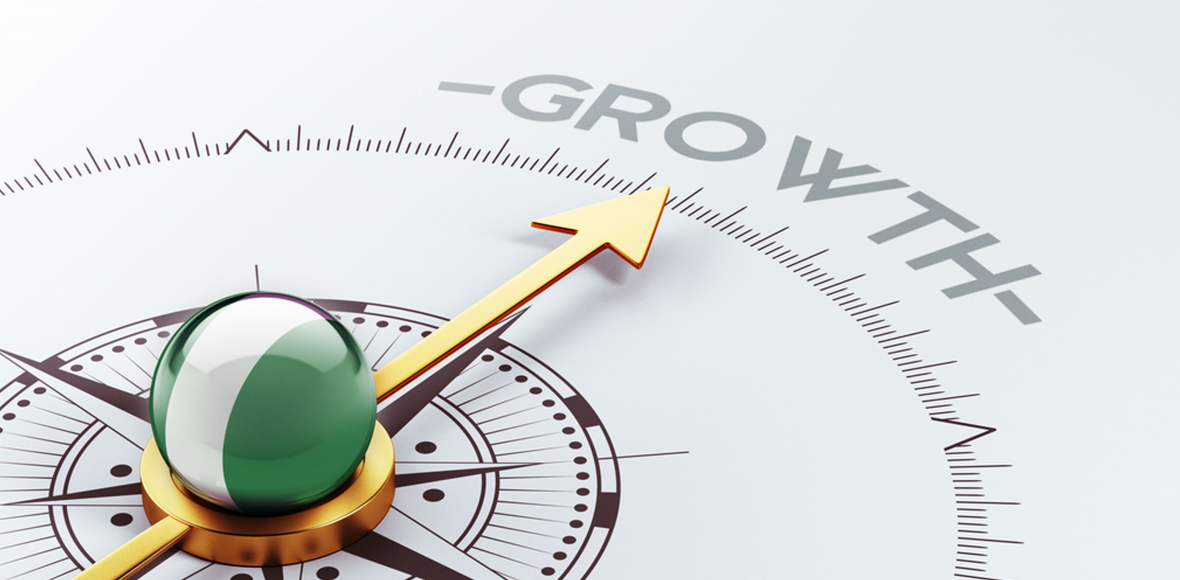
Your Roadmap to Financial Security
Start your wealth journey with us today
Partner with Coronation’s team of financial experts to make smart choices to preserve and grow your wealth.


Nigeria’s economic ride in 2024 looks bumpy, with cautious optimism balanced by challenges. The IMF’s forecast of steady global growth (at least 3.1% GDP y/y) and easing inflation offers a glimmer of hope.
While the global economy shows signs of recovery, lingering uncertainties and domestic issues casts a shadow on the path forward.
This blog post explores key findings from our 2024 Economic Outlook Report, “Shifting perspectives, and pushing economic resilience,” providing insights into Nigeria’s projected growth, inflation, and economic landscape.
Nigeria’s tenacity mirrors its people. Despite challenges, the nation is determined to chart a path towards prosperity. Let’s explore the economic strategies Nigeria has in store.
Nigeria’s projected GDP growth of 3.76% in 2024 may appear modest. However, it signifies an upward trend compared to the 2.74% achieved in 2023 and surpasses our forecast of 2.6%. While this falls short of 2022’s 3.1% growth, it reflects global economic challenges. Importantly, this projected increase is notable considering sluggish growth in major economies.
On the bright side, this projected growth underscores Nigeria’s underlying potential economic strength. However, a word of caution is necessary. While 3% GDP growth is a positive sign, it remains below the population growth rate. This suggests a disconnect between economic expansion and improvements in living standards for ordinary Nigerians. To ensure this growth becomes tangible benefits, we need a “trickle-down” effect where economic expansion reaches everyone’s pockets.
The persistent challenge of high inflation is expected to linger, with an anticipated year-end rate of 27.5%. Insecurity and a depreciating Naira, which weakens purchasing power and disrupts business operations, are key drivers. To achieve a balance, targeted monetary policy and innovative solutions are needed to strengthen the local currency.
Striking a balance between controlling inflation and maintaining economic growth is a delicate act. Fortunately, tools are available. Targeted monetary policy adjustments, like raising interest rates, can help curb inflation, but might slow down economic activity in the short term.
Monetary policy is expected to tighten further, with a projected increase in the Monetary Policy Rate (MPR) by 650 basis points to reach 25.25% in our baseline scenario.
Other innovative solutions include easing liquidity constraints in the foreign exchange market. Which are expected to persist, driven by weak supply versus high demand dynamics. Despite conversations around government efforts to boost foreign exchange liquidity, there are concerns around impact pace. However, there is always light at the end of the tunnel.

The non-oil sector has emerged as a beacon of hope, with resilient industries such as finance, telecoms, and construction poised to drive growth resiliently in the present shaky macroeconomic terrain. The government, however, can play a pivotal role in nurturing this powerhouse.
Strategic policies can further unlock the potential of these sectors, fostering economic diversification and long-term sustainability. There are Facts to back this up: the non-oil economy grew steadily in Q4 2023 (3.1% y/y) compared to Q3 (2.75% y/y). Key drivers include finance and insurance (29.8% y/y), telecoms (6.9% y/y), construction (3.7% y/y), real estate (1.3% y/y), agriculture (2.1% y/y) and trade (1.4% y/y).
Combined, these sectors accounted for 70% of total GDP in Q4 ’23.
This isn’t just a recent development. The non-oil sector holds immense potential that hasn’t been fully harnessed. While talk of economic diversification has been ongoing, it’s time to turn that talk into action. In Q4 2023, non-oil GDP growth stood at a promising 3.07% y/y. This data, meticulously analyzed from the National Bureau of Statistics (NBS) reports, highlights the resilience and stability of these sectors compared to others.
Economic forecasts, much like life, can be unpredictable. While our base-case scenario presents a optimistic path forward, our downside scenario calls for urgency in implementing innovative economic reforms. GDP growth could dip to a concerning 2%, with inflation skyrocketing to a staggering 33.6% y/y. This stark reality underscores the need for proactive measures.
Tightening monetary policy is crucial, but it cannot be a stand-alone solution. Targeted interventions to address specific challenges, like insecurity, act as a shield against these risks. Even with such daunting prospects, there’s room for optimism.
Fluctuations in the foreign exchange market have a ripple effect across the economy. A depreciating Naira causes the cost of imported goods and raw materials to rise, impacting businesses and everyday people alike. Managing this volatility and ensuring a stable exchange rate is vital for fostering business confidence and attracting much-needed foreign investment.
The future of Nigeria’s economy rests in our hands. The choices we make today will determine the ending of this economic story. The government has a key role to play – fostering a business-friendly environment, attracting foreign direct investment, and investing in infrastructure development. Additionally, empowering the agricultural sector, a crucial pillar of the economy, can unlock its full potential and contribute to food security.
Beyond government policies, individual Nigerians are architects of our economic future. Supporting local businesses, fostering innovation and entrepreneurship, and holding authorities accountable are all essential for building a more resilient and prosperous economy that benefits all.

Nigeria’s economic path in 2024 presents a crossroads – a mix of challenges and opportunities. By acknowledging these complexities, implementing well-crafted policies, and fostering a spirit of collaboration between government, businesses, and individuals, Nigeria can navigate this juncture effectively. Through collective action, Nigeria can chart a course towards a more resilient and prosperous future for all.
Download the full report here.